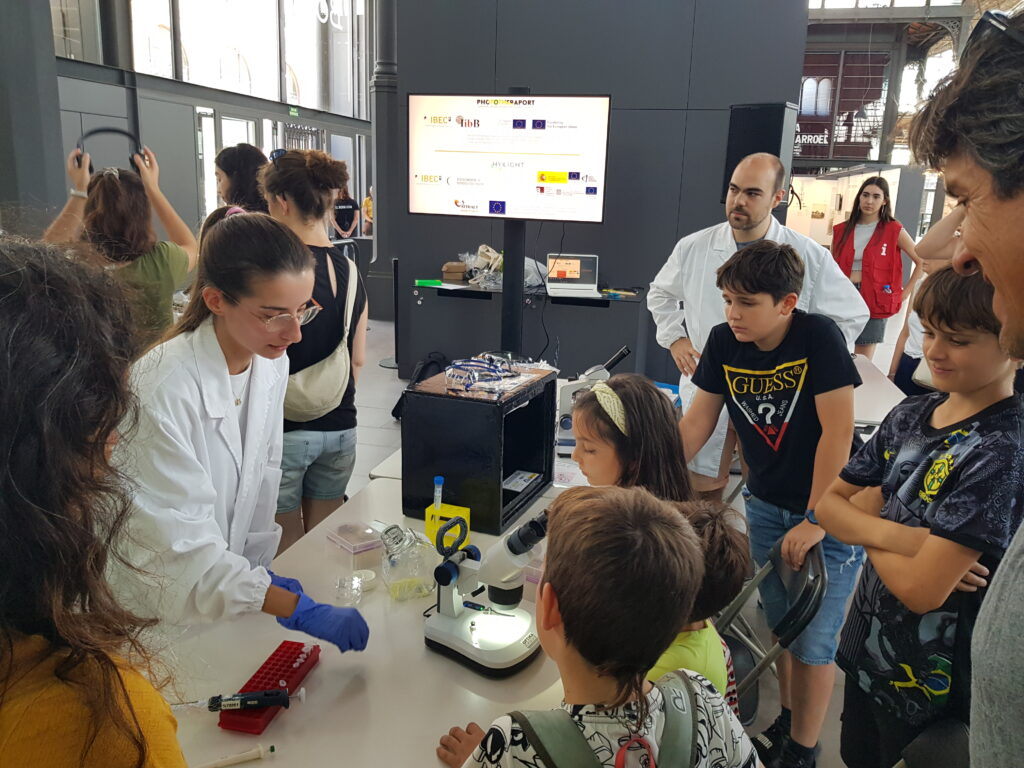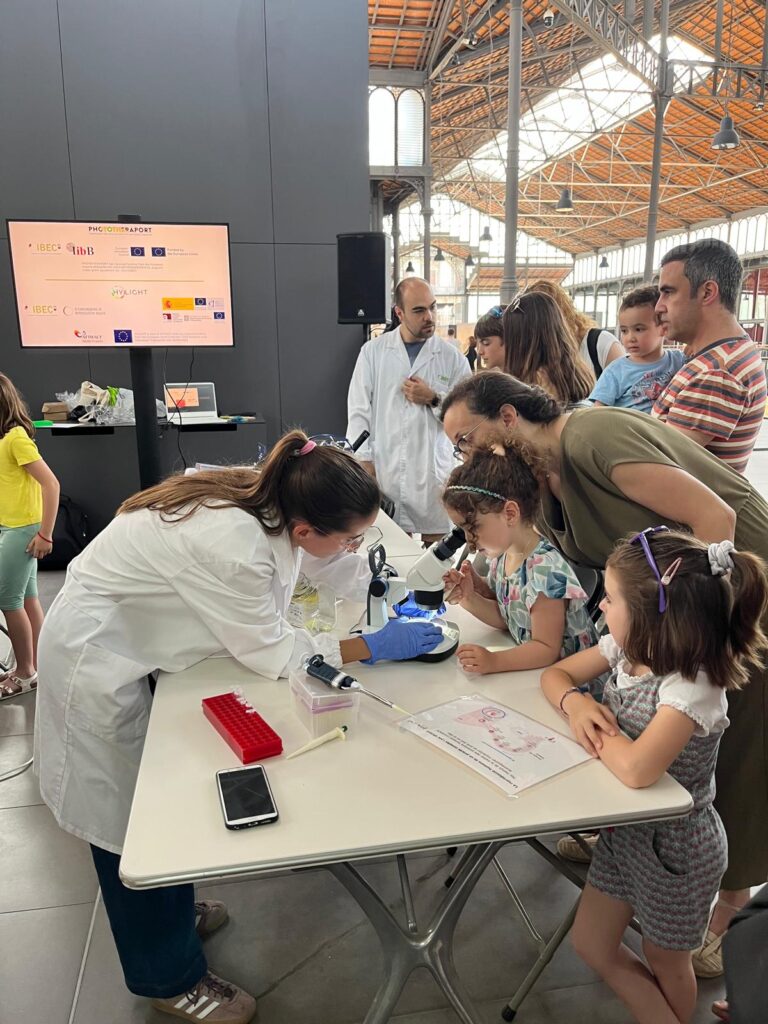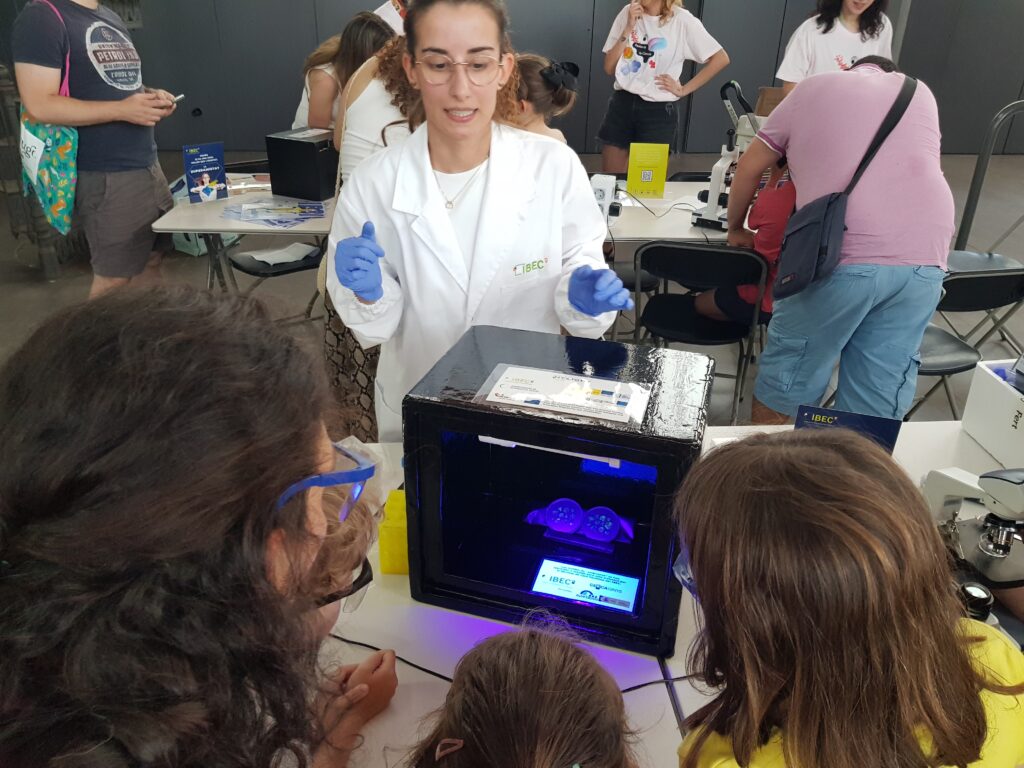One more year HYLIGHT researchers from the Institute for Bioengineering of Catalonia (IBEC) bring human reproduction and embryology closer to society, in a hands-on activity during the 18th edition of the Science Party in Barcelona.

The 18th Science Festival (Festa de la Ciència) in Barcelona has once again attracted a large audience of all ages. Over the course of three days, around 18,000 people enjoyed shows, workshops, experiments, micro-talks, presentations, and many other activities offered to the general public. More than 120 entities and institutions organised the 164 proposals, including the one from HYLIGHT researchers at the Institute for Bioengineering of Catalonia (IBEC).
In the morning of 1st of June, Julia Fabà and Ot Massafret from the Bioengineering for Reproductive Health Group at IBEC, led a hands-on activity aimed at families and the general public. Around 200 people visited the HYLIGHT stand to participate in the “Light to help solve health problems” activity and learn about human reproduction and the project’s objectives.
The outreach activity opened with a concise presentation in which researchers described the biological process of human fertilization and embryo implantation, along with an overview of how assisted reproduction laboratories work. They introduced the HYLIGHT project, explaining that it combines hyperspectral imaging and artificial intelligence to identify embryos with the highest implantation potential based on their metabolic characteristics with the aim to improve the accuracy and efficiency of embryo selection in fertility treatments.

Following the introduction, participants had the opportunity to engage directly with the scientific content. Using microscopes, they observed the morphology and development of mouse embryos. In a hands-on simulation, visitors mimicked the work of embryologists by transferring small glass beads — equivalent in size to human embryos — between Petri dishes under a stereo microscope, emulating routine tasks in IVF clinics. Some videos illustrated the progression of a human embryo over its first five days of development and the Intracytoplasmic Sperm Injection (ICSI) technique.
Another activity involved the use of specially crafted “fake embryos” made from PMDS molds painted with UV-sensitive paint. Under regular lighting, the embryos appeared indistinguishable, but when exposed to ultraviolet light, distinct color differences became visible. This interactive element served to illustrate the principle behind HYLIGHT’s methodology: that certain key differences in embryo viability may be revealed through advanced imaging techniques not visible under standard light microscope conditions.

These activities served not only to demystify complex reproductive technologies but also to reinforce the relevance of scientific research in everyday life. By fostering curiosity and engagement, the event successfully brought science closer to the general public.
